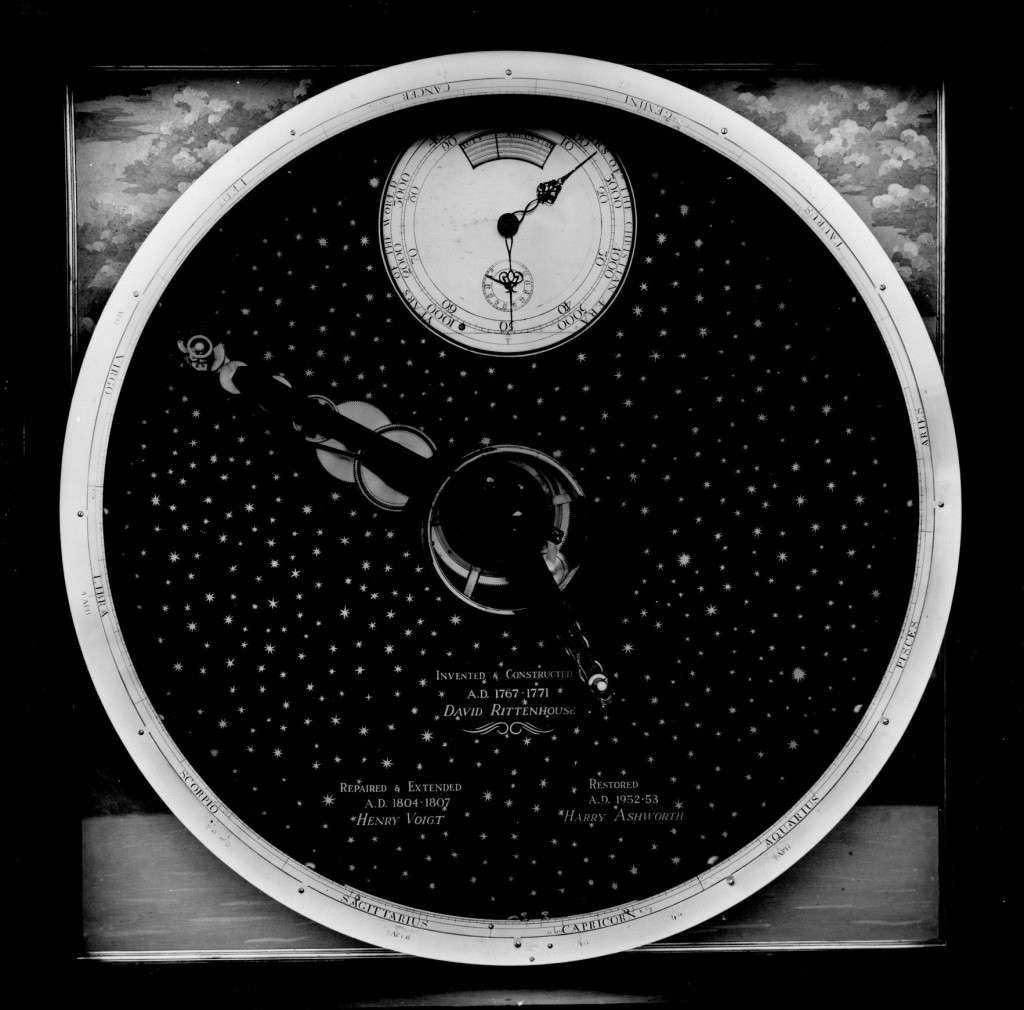An orrery was a machine that simulated the movements of the solar system through axles and gears. The term had been coined early in the 1700s in honor of the fourth Earl of Orrery. He didn’t invent the device, but he was the patron and funder of the man who did, George Graham. [It was good to be an earl.]
Like Graham, Rittenhouse was a clockmaker. Their orreries were based on the idea that the solar system ran like a clock.
Rittenhouse’s orrery was just one of the machines he invented in Revolutionary Philadelphia. He was also a surveyor and astronomer, and one of the Philadelphia Whigs.
In honor of his orrery, Princeton College gave Rittenhouse an honorary degree. The college president, the Rev. John Witherspoon also raised nearly £300 to buy the machine in April 1770. It was installed in Nassau Hall the following year.
John Adams viewed the Princeton orrery on 27 Aug 1774, on his way to the First Continental Congress, writing:
Here we saw a most beautifull Machine, an Orrery, or Planetarium, constructed by Mr. Writtenhouse of Philadelphia. It exhibits allmost every Motion in the astronomical World. The Motions of the Sun and all the Planetts with all their Satellites. The Eclipses of the Sun and Moon &c.However, the sale to Princeton had miffed the Rev. William Smith, head of the College of Philadelphia (precursor of the University of Pennsylvania). He thought he’d wooed Rittenhouse into giving his institution first refusal on the device. So Smith convinced the Pennsylvania legislature to “purchase from Mr. Rittenhouse a new Orrery, for the use of the Public, at any sum not exceeding four hundred pounds.”
This new machine, apparently delivered by the end of the year, was bigger and more sophisticated than the first. Rittenhouse followed the same basic design but added some new features. British-Americans viewed the “Rittenhouse orrery” (they seem to have treated the two machines as one) as a convincing argument of their society’s sophistication.
TOMORROW: Orreries at war.

Saw one of these at the the University of Pennsylvania and really was amazed at its beauty. Thanks for putting out additional information on these.
ReplyDelete